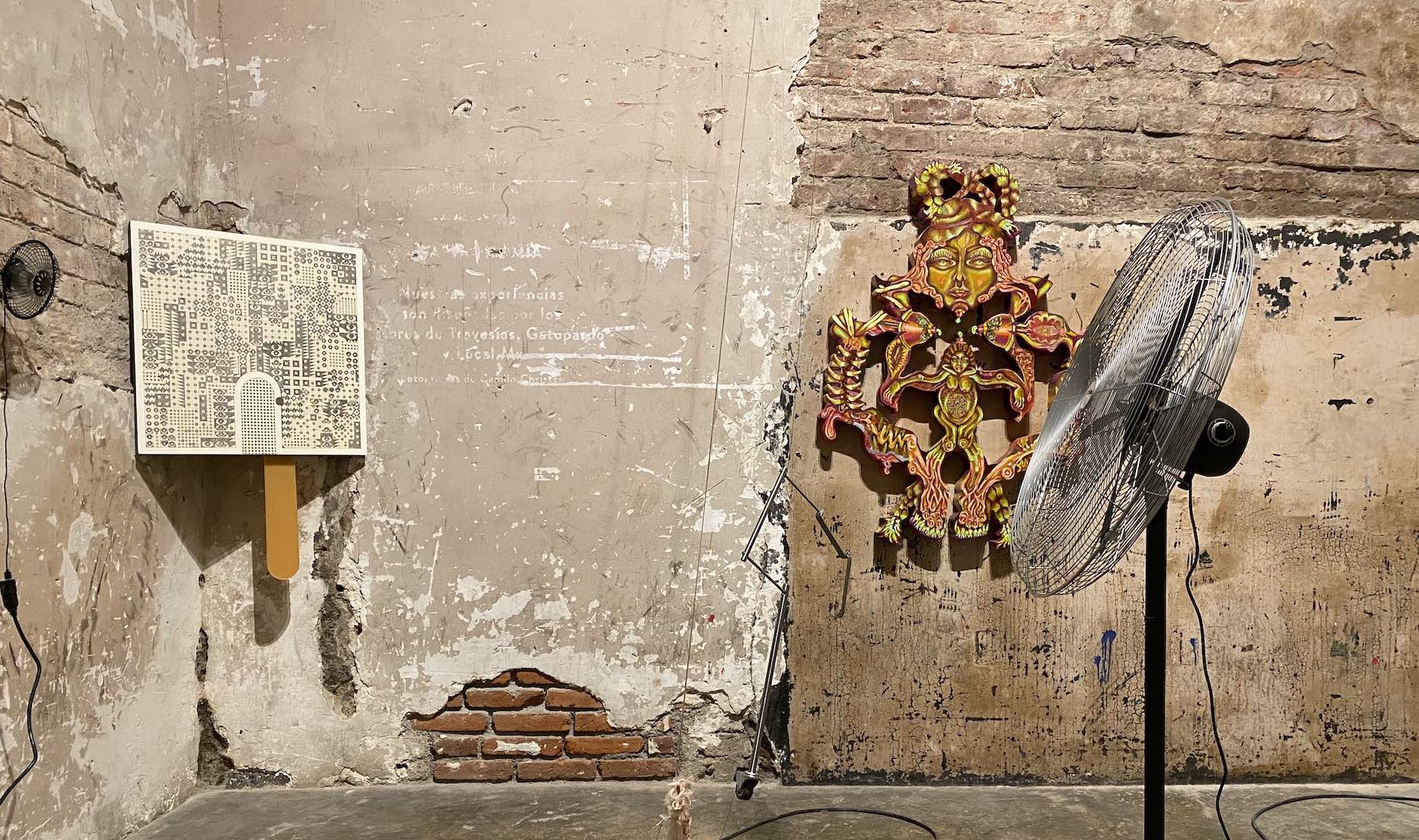
Review
Unfamiliarity as Creative Power: Re/flujo(s) by Madeline Jiménez Santil and Nicole Chaput
by Isabel Sonderéguer
Presented by Saenger Galería at Salón ACME
Reading time
5 min
Based in a complex network of questions about how and from where art has been historicized, designed, and codified, there arises the project ¿Cómo se construye un río? (“How Is a River Built?”), which combines the artistic productions of Madeline Jiménez Santil and Nicole Chaput, curated by Yina Jiménez Suriel and Haydée Rovirosa.
At Salón Acme they are currently presenting Re/flujo(s), the first chapter of reflections that will culminate in April at Saenger Galería. Throughout the week, the project’s four creators will transform the space and change the distribution of works. As Jiménez Santil explains, “In this way, the aim is that you never step into the same river twice, that the experience inside the exhibition space is never the same.”
Thus, they hope to trace out routes that might question the space’s passivity. For this same reason, the project starts with a question, since from there it invites movement, imagination, and action. Re/flujo(s) opens up the first part of a dialogue arising from the desire to create something outside the traditional codes of the white cube and of art history. We are all invited to participate, even without needing to have concrete answers, but in any case invalidating unfamiliarity as a creative power.
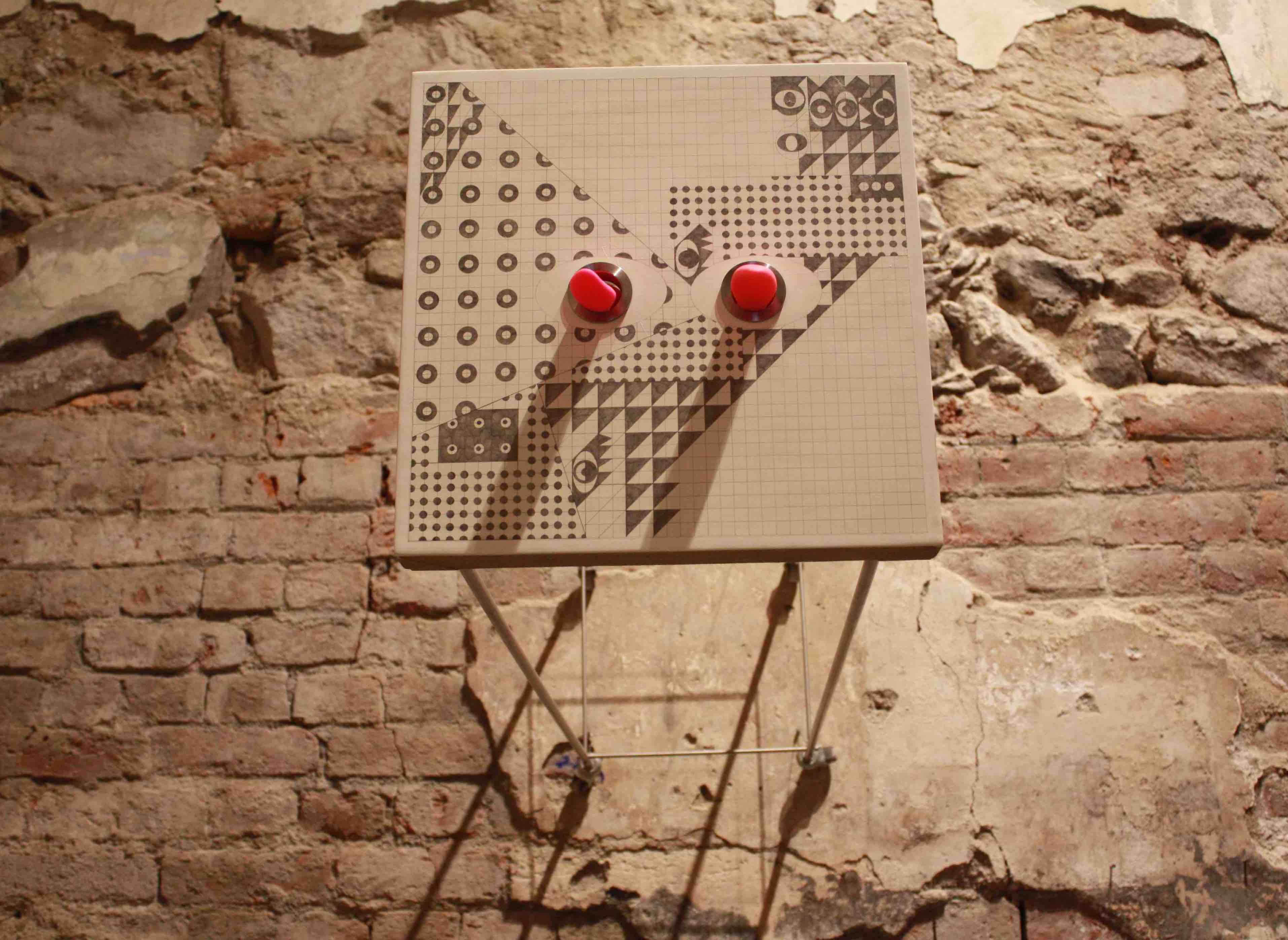
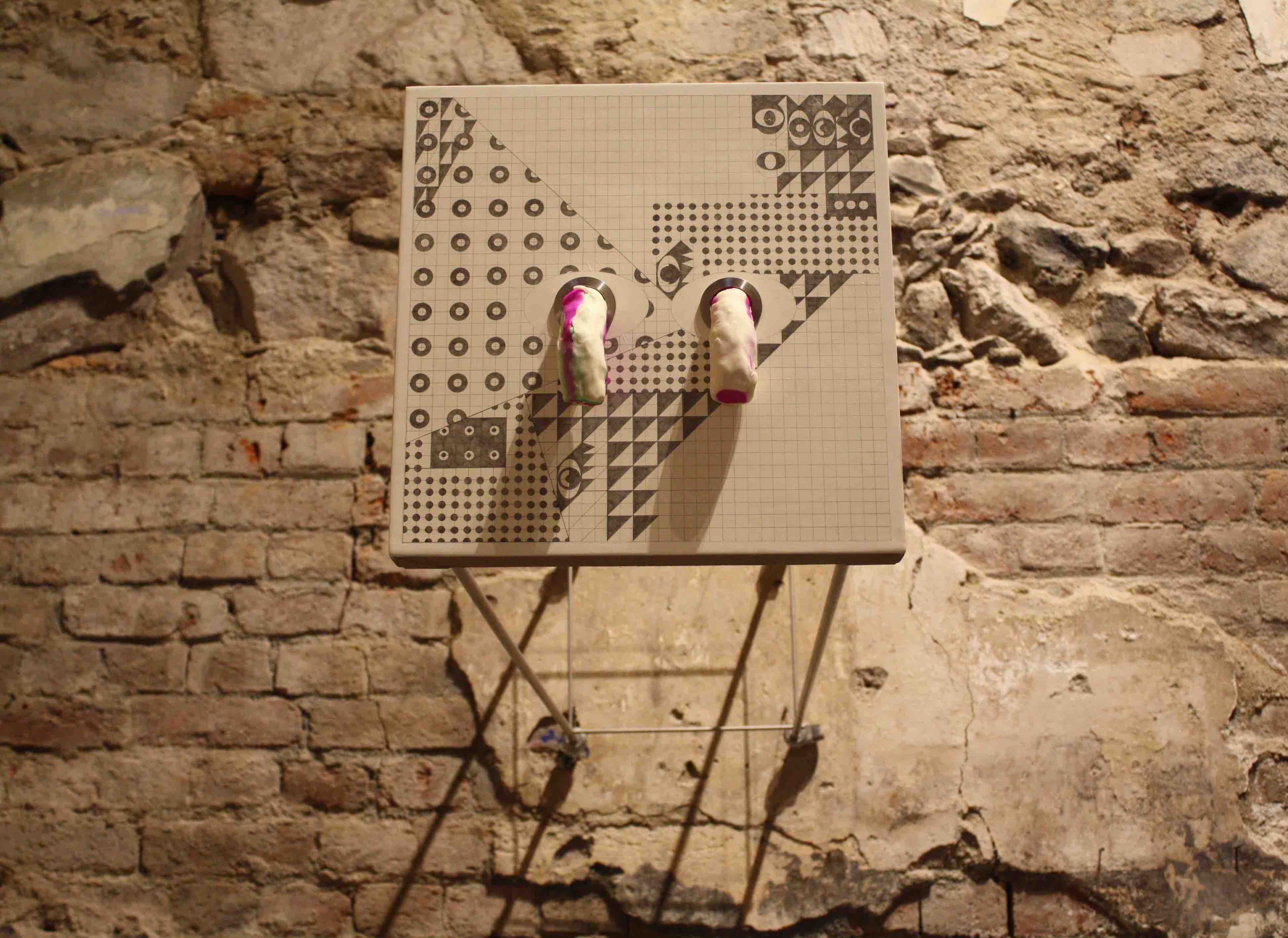
The artists came into contact thanks to Haydée Rovirosa, who was able to perceive the bridges connecting their productions as well as the shared concerns from which their plastic and theoretical explorations are based. Both have dedicated themselves to imagining and speculating about new ways of being a body, of making corporalities. Departing from stereotypes and imposed norms, they bet on the construction of future, distorted, and mutable skins.
Madeline Jiménez Santil explores the relationships between bodies, geometry, and mechanics. Her work aims to rethink how dominant discourses have conceived and regulated bodies. In this exhibition, we see this grounded in exercises that stress the geometric and the machinic, together with the organic. The patterns embodied on the canvases arise from measurements of her own body. Moreover, the pieces show elements that are reminiscent of sex toys or construction equipment. From this space, Madeline imagines non-colonized, non-binary bodies, where not everything that’s said is based on race, social class, or gender. These representations—which are more hermetic—open up lines of flight, allowing us to understand and create bodies from other latitudes, without being pigeonholed or stereotyped in the same categories.
Nicole Chaput’s work questions the ways in which women’s bodies have been represented and constructed. The characters in her pieces break the limits of the canvas in order to become bodies, wagering on new anatomies that escape a confined experience of femininity. The artist wants her creations to inhabit the space with us, finding new ways to approach the idea and concept of the body. In the exhibition we see one of the first exercises in which she shows a woman seeking to escape from the frame. Using traditional techniques of religious painting, her works give a sacred place to the hysterical and overflowing body of women, instead of the masculine and Catholic values that typically permeate sacred productions. The same moment accompanying the installation and curatorial discourse is visible in Chaput’s production: “The painting is designed so that your eye moves inside it, at least with the painting that interests me,” she said.
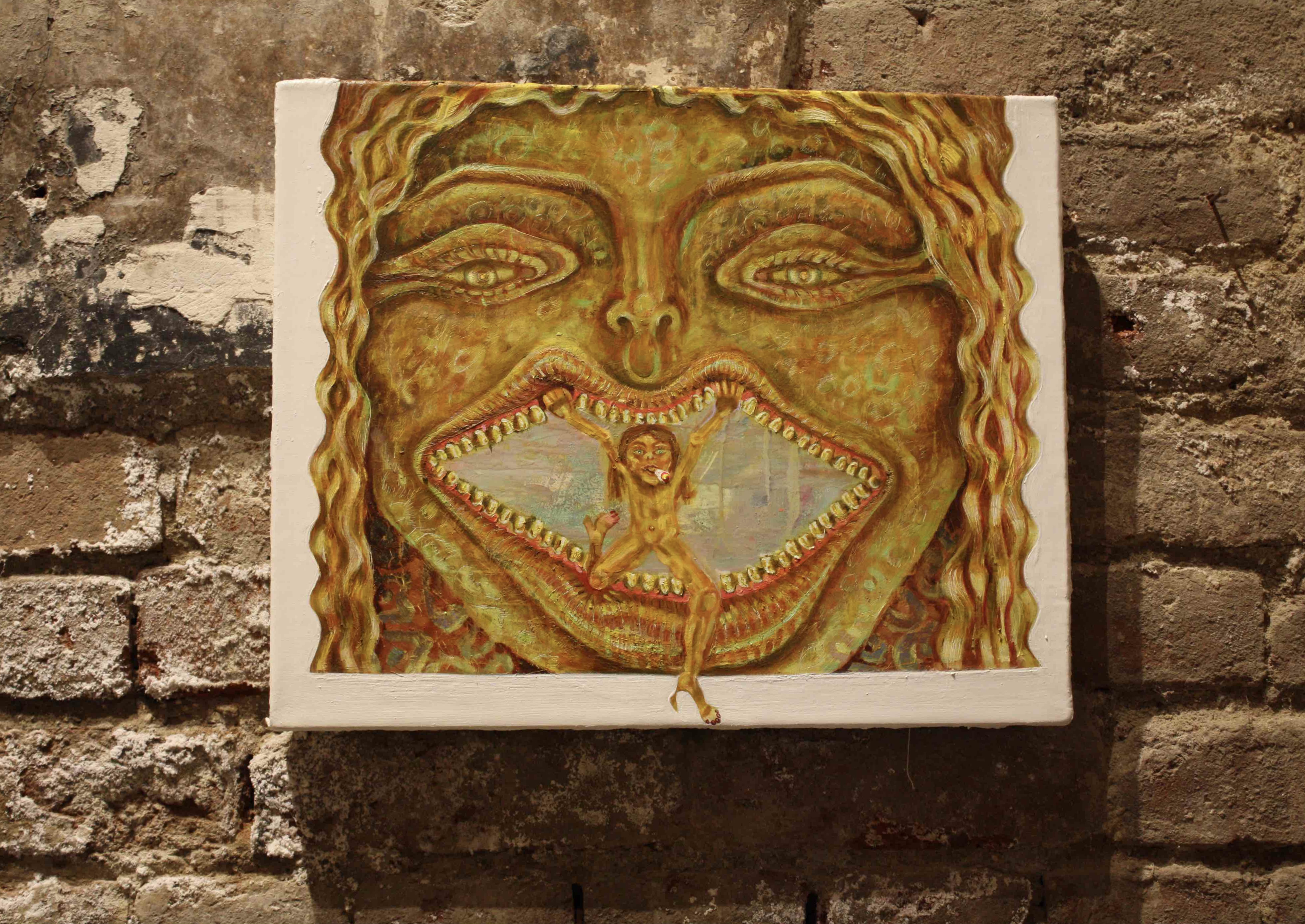
Both Chaput and Jiménez Santil want to get rid of the creative expectations that arise from the stereotyped body of the female artist. To once again take up the words of Yina Jiménez Suriel: “Museums and exhibition models are a training ground for a life experience and imagination—that’s the core of the project—different ways of approaching these systems of colonization of the body.” These pieces are the embodiment of desire; they seek new ways of inhabiting the world of art in particular, though also of weaving bridges to life in general. This is why their questions form part of the process, not a finished and static conclusion.
Art then functions as a space for thought that opens the way to pure instability. The artists, together with the curators, have also focused on the concept of geography: that is, on the idea that the pieces maintain a dialogue with the place where they are presented. The four of them have wanted to escape, at least for a moment, from the white cube and from the art history that tends to override local particularities and to present everything under the same conditions, regardless of geographical characteristics: who you are or what you want to talk about.
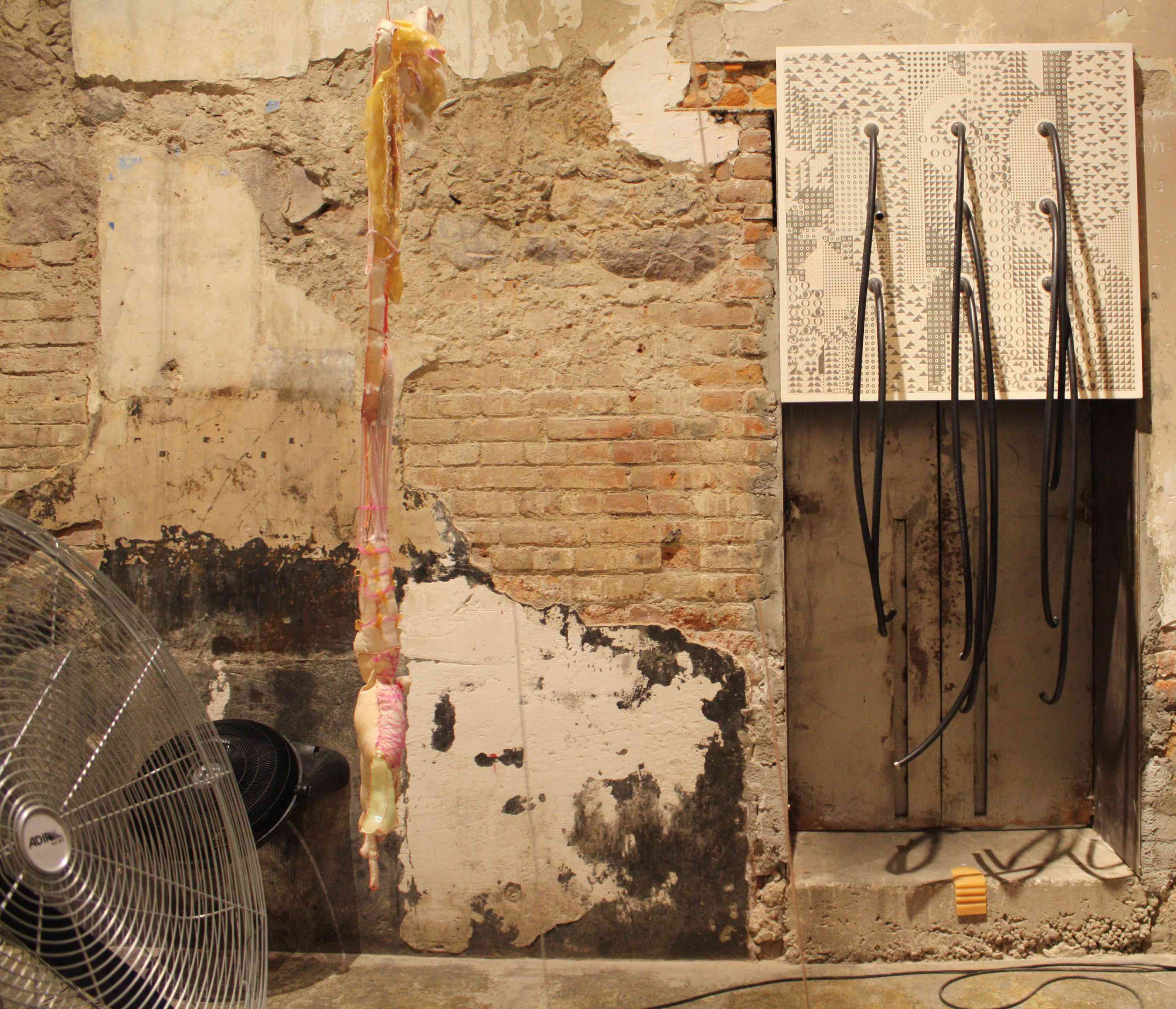
In the words of Chaput: the space at Salón Acme is like a torn body, a machinery under construction that is “pumping blood and energy to all the works and towards all the axes of the space.” The installation and final arrangement of works were arrived at by trying to replicate the natural exercise under which we build and inhabit our daily lives. The details in this case add up, instead of getting in the way.
The details in this case add up, instead of getting in the way. Chaput and Jiménez Santil take up the traditional ways and ideas of doing art and then pollute them. They aim to exceed and surpass the subjects of modernity. The frame becomes hysterical when it comes into contact with the artists’ bodies. They then give it another twist: that the body be the builder of the world, but one opening the door to an infinite multiplicity. Without giving the viewer any kind of response—only proposing possibilities, creating from difference—the artists propose imaginative spaces existing outside the academic and colonial framework, opening a crack in order to escape from it, wagering on discomfort, humor, and chaos.
The exhibition can be visited in Saenger Galería’s booth at Salón Acme, February 10-13.
Translated to English by Byron Davies
Published on February 13 2022